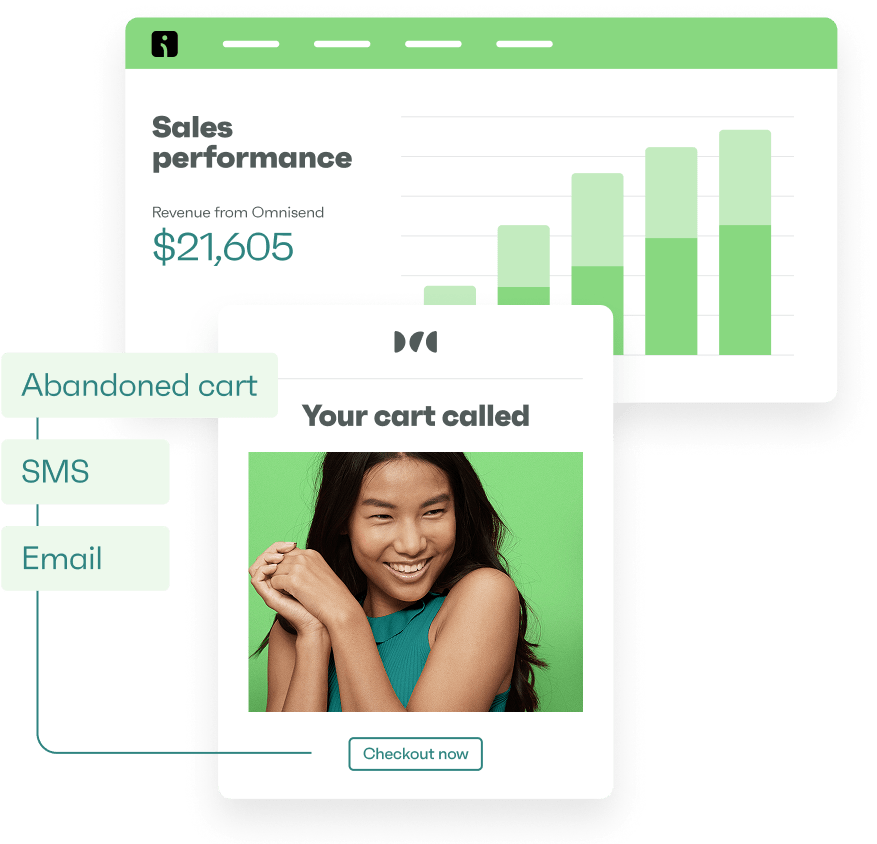Drive sales on autopilot with ecommerce-focused features
See FeaturesTop marketing teams from the biggest companies implement AI at 2.5 times the rate of underperformers (Salesforce), and you can follow their lead and use their AI in marketing examples to inspire your campaigns.
The likes of Amazon, Coca-Cola, Nike, and Spotify use AI to create better customer experiences, and ultimately, increase revenue and marketing ROI.
Examples include generative AI product recommendations and descriptions (Amazon, perfect for your ecommerce store), and AI augmented reality try-ons, which Google provides to help its shopping customers visualize outfits and accessories.
This article includes 10 AI marketing examples from which you can take ideas, plus a primer on what AI marketing is, why it matters, and tips to optimize your efforts.
Quick sign up | No credit card required
How many of your customers use AI? Find out here:
Half of online shoppers now use Gen AI: The hype, the habits, and the hesitations
What is AI in marketing?
AI in marketing refers to software that processes customer data and automates marketing tasks. It includes chatbots answering questions, algorithms deciding which ads to show, and tools that write email subject lines from prompts.
Key applications:
- Email platforms that segment lists automatically
- Tools that write and test ad copy variations
- Systems that predict when customers might cancel
- Software that personalizes website content for each visitor
Ignoring AI means competing against businesses that test 50 ad variations while you test three, or send perfectly timed emails based on segment activity while yours land randomly. The tools exist, and they’re affordable — using them is no longer optional.
Additional reading
AI email marketing: a beginner’s guide
Why AI in marketing matters today
Stanford reports that 71% of companies using AI for marketing and sales see revenue gains.
While some businesses test AI cautiously, others automate entire workflows and pull ahead. The technology improves monthly, costs drop quarterly, and the gap widens.
Key benefits of AI in marketing:
- Personalization at scale: Send unique messages to 10,000 customers based on their purchase history and browsing behavior
- Higher campaign ROI: Test 100 subject lines simultaneously to find what converts 3x better and improve your email marketing ROI
- Time reclaimed: Stop manually tagging contacts or scheduling posts when software handles it automatically
- Predictive audience targeting: Find customers who match your best buyers before they even visit your site
- Content generation speed: Create a month’s worth of social posts in an afternoon
- Always-on optimization: Let algorithms adjust bids and budgets 24/7 based on field performance
These benefits multiply when combined. The examples below show how successful businesses use AI to grow revenue, not just save time.
Real-world examples of AI in marketing
This section will introduce 10 artificial intelligence in marketing examples from successful brands, ranging from AI assistants to virtual try-on tools.
Companies using AI for marketing include big hitters like Amazon, medium businesses like Zalando, and small retailers you might not have heard of. The point is that AI is accessible to all, and the examples below will give you a head start in your marketing.
1. Zalando – AI shopping assistant
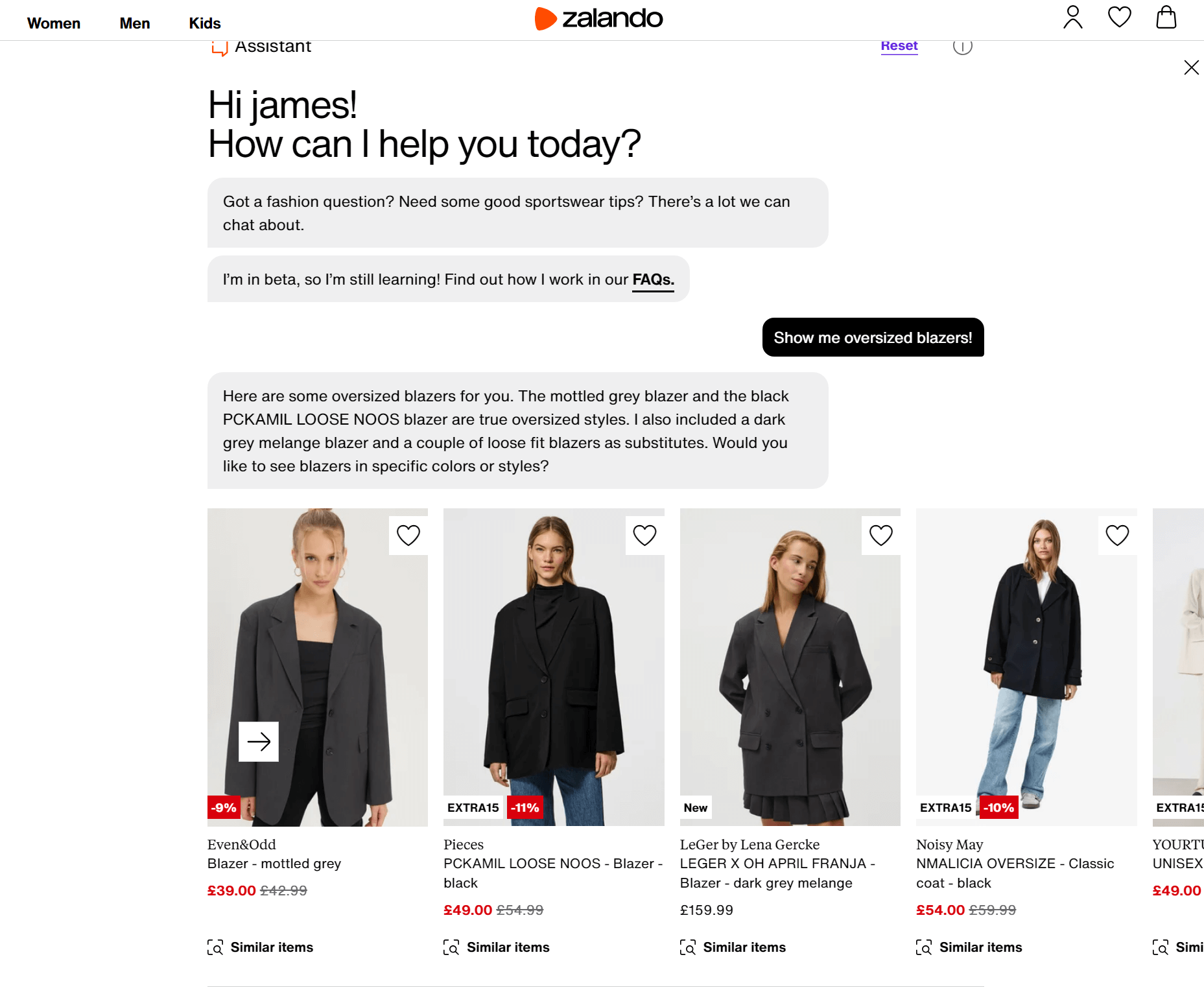
Zalando’s ChatGPT-powered fashion assistant helps customers navigate its massive catalog conversationally. Ask “What should I wear for a wedding in Santorini in July?” and the AI understands formal events + Greek island + summer weather.
The assistant refines results via conversation. Initial suggestions too casual? It adjusts to cocktail attire. Need sizes or preferred brands? Just ask. For reference, check out the example above, which shows our search for oversized blazers.
What you can learn from it
Build AI assistants that understand context beyond keywords. A wedding in Santorini requires different clothing than one in London, so train your AI to recognize location, season, and occasion nuances.
Additional reading
25 ChatGPT prompts for email marketing to save you time
2. Google Shopping – AI mode and virtual try-ons
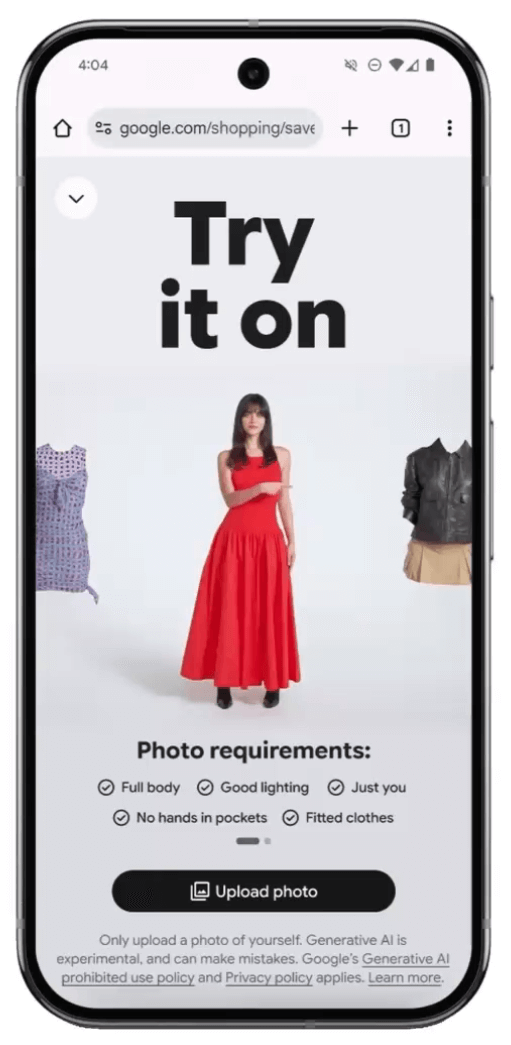
Google’s virtual try-on uses a custom fashion AI model that understands how fabrics drape on bodies. Upload a full-length photo and the technology maps clothes onto your shape, preserving how denim stretches differently from silk, how pleats fall, and where hems hit.
It works across billions of items from Google’s Shopping Graph. The AI maintains your body proportions and pose while swapping garments. Try on wedding guest dresses, vacation shirts, and work pants, then save looks or share with friends for feedback.
What you can learn from it
Virtual try-on works best for categories with high return rates, such as fashion, eyewear, jewelry, and other items that customers struggle to visualize on themselves. Use try-ons when you want to improve customer experience with artificial intelligence in marketing.
Additional reading
7 cool interactive marketing examples [expert tips]
3. Coca-Cola – generative AI for creative campaigns
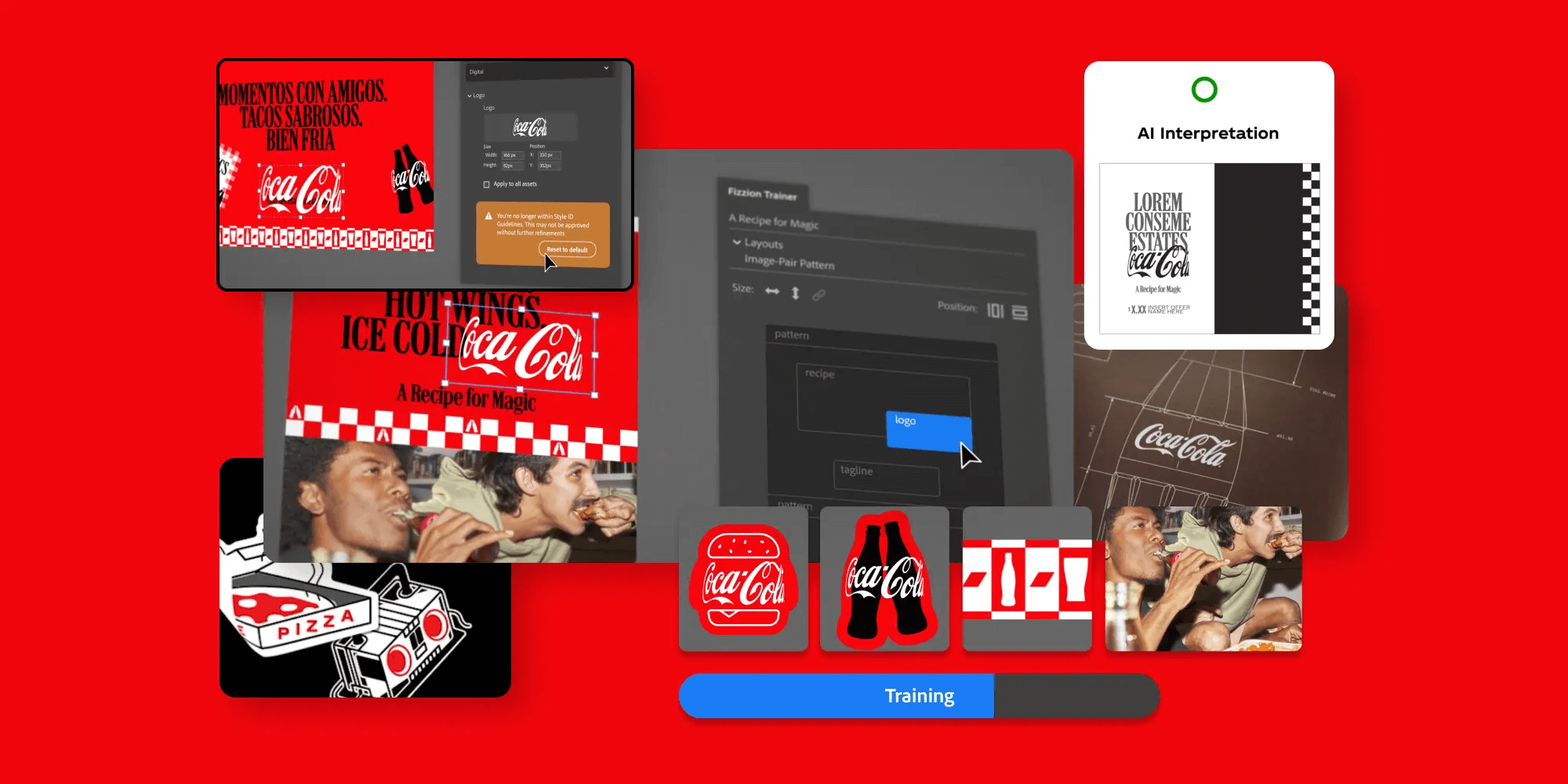
Coca-Cola built Fizzion with Adobe to handle 200+ brands across 200+ countries. The AI watches designers work in Photoshop, learns their decisions, then generates campaign variations 10x faster.
Design elements become “smart.” For example, logos and typography know how to behave across contexts. Fizzion produces hundreds of localized versions from AI marketing campaigns, with proper languages and cultural adaptations.
What you can learn from it
Train AI tools on your design process, not just brand guidelines. Record how your team makes creative decisions, then use that data to automate repetitive localization tasks.
4. Starbucks – personalizing in-app marketing
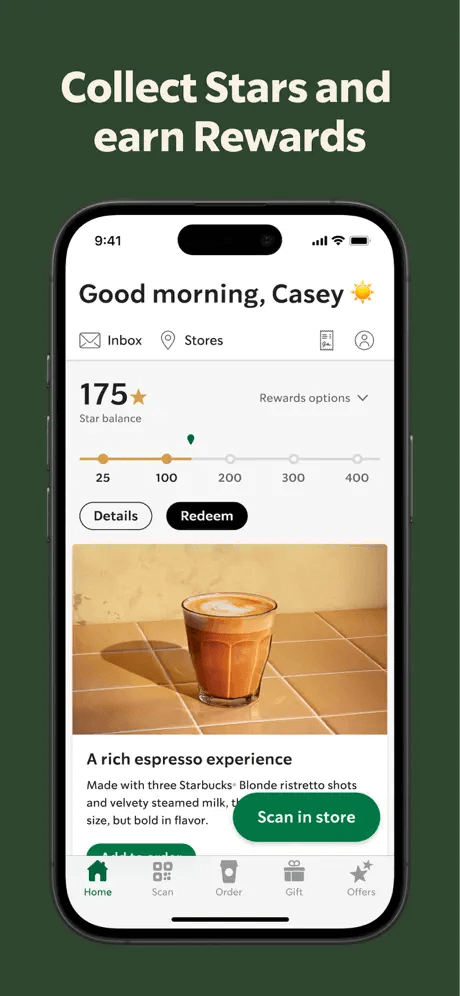
Starbucks’ DeepBrew AI platform powers personalization. The mobile app tracks your orders and makes recommendations, such as cold brew when temperatures spike. Order the same drink daily at 7 AM, and the app pre-loads it for one-tap ordering.
The backend runs differently. AI schedules baristas based on foot traffic predictions, manages bean inventory by analyzing sales velocity, and routes mobile orders to balance kitchen workload across stations.
What you can learn from it
Balance AI investments between backend efficiency and frontend experience. Inventory predictions save money, and personalized recommendations increase sales.
5. Amazon – recommendation engines for ecommerce

Amazon rewrites product descriptions on the fly based on who’s shopping. Frequent gluten-free searchers see “gluten-free” jump to the front of cereal titles. Battery life obsessives get wattage and hours prominently displayed.
The AI pulls from purchase history, abandoned carts, and search patterns to decide what details matter to each shopper.
LLMs generate these personalized descriptions, then another LLM audits them for accuracy. Instead of generic recommendations like “More like this,” shoppers see “Gift boxes in time for Mother’s Day” based on recent searches.
What you can learn from it
Rewrite product descriptions dynamically. For instance, if you sell outdoor gear, highlight waterproof ratings for Pacific Northwest shoppers and UV protection for customers in desert regions.
6. Boohoo – AI search features
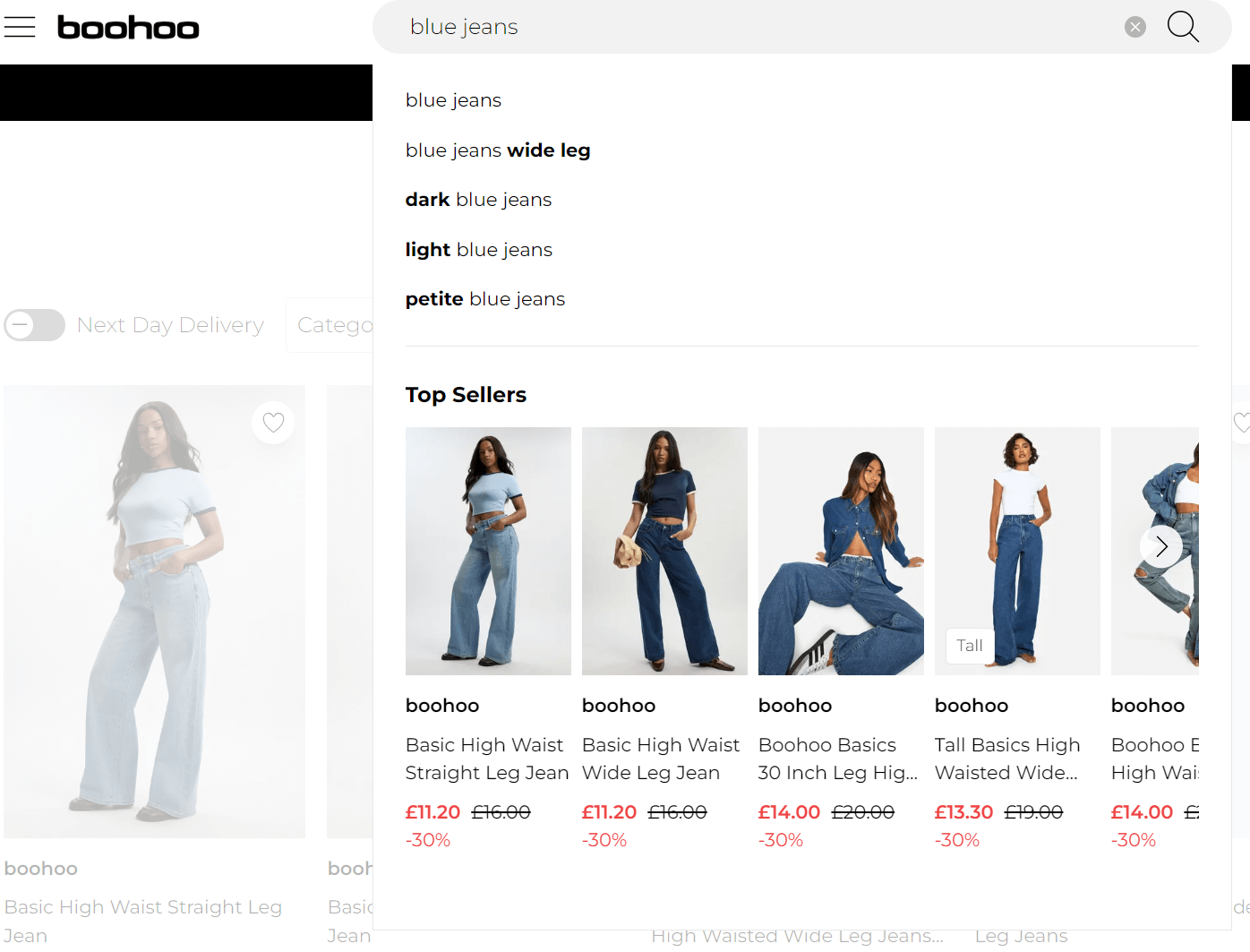
Boohoo Group implemented AI-powered search across its fashion brands, including PrettyLittleThing and BoohooMAN.
When customers search for items like “summer dresses,” “oversized hoodies,” or “blue jeans” (as in the image above), the AI analyzes their past purchases and browsing history to rank top sellers personally for each shopper.
What you can learn from it
Add search filters that learn from purchase history — customers who buy oversized clothing should see relaxed-fit items first when searching any category.
7. Nike – AI-powered personalization from customer data
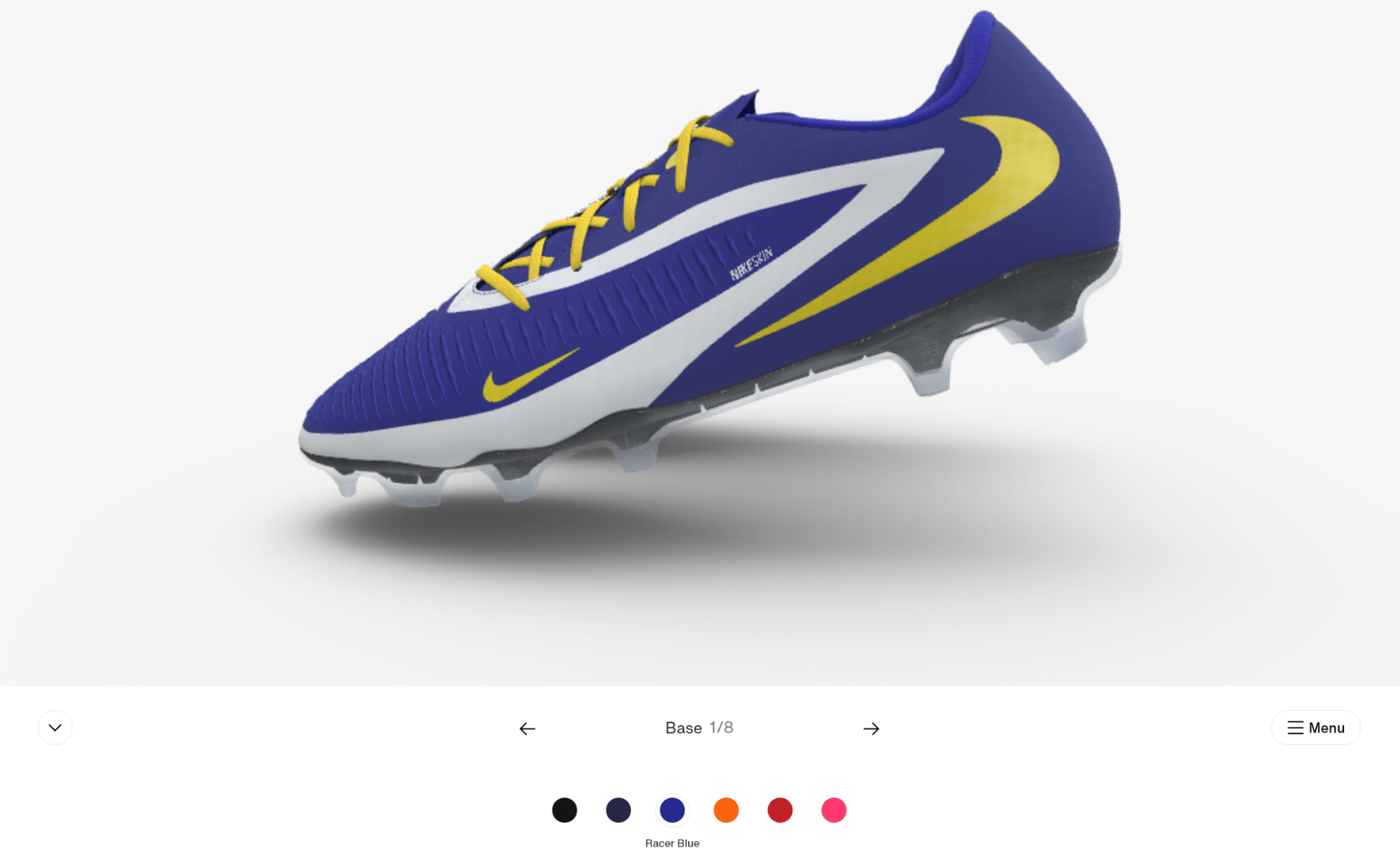
Nike taps into 170 million loyalty members’ data to customize shopping. Its Nike By You ecommerce feature lets customers build trainers, and it recommends customizations based on previous activity and preferences.
Additionally, Nike uses customer data to recommend products. Search for “running shoes” and results vary wildly. One member sees cushioned trainers at the top, another gets minimalist racing flats. Past purchases, app browsing, and even workout data feed the algorithm.
What you can learn from it
Combine purchase data with activity data from other touchpoints to gain a comprehensive view of customer behavior. If customers use your fitness app, recipe blog, or style quiz, feed those insights into product recommendations.
8. Netflix – recommendation algorithms
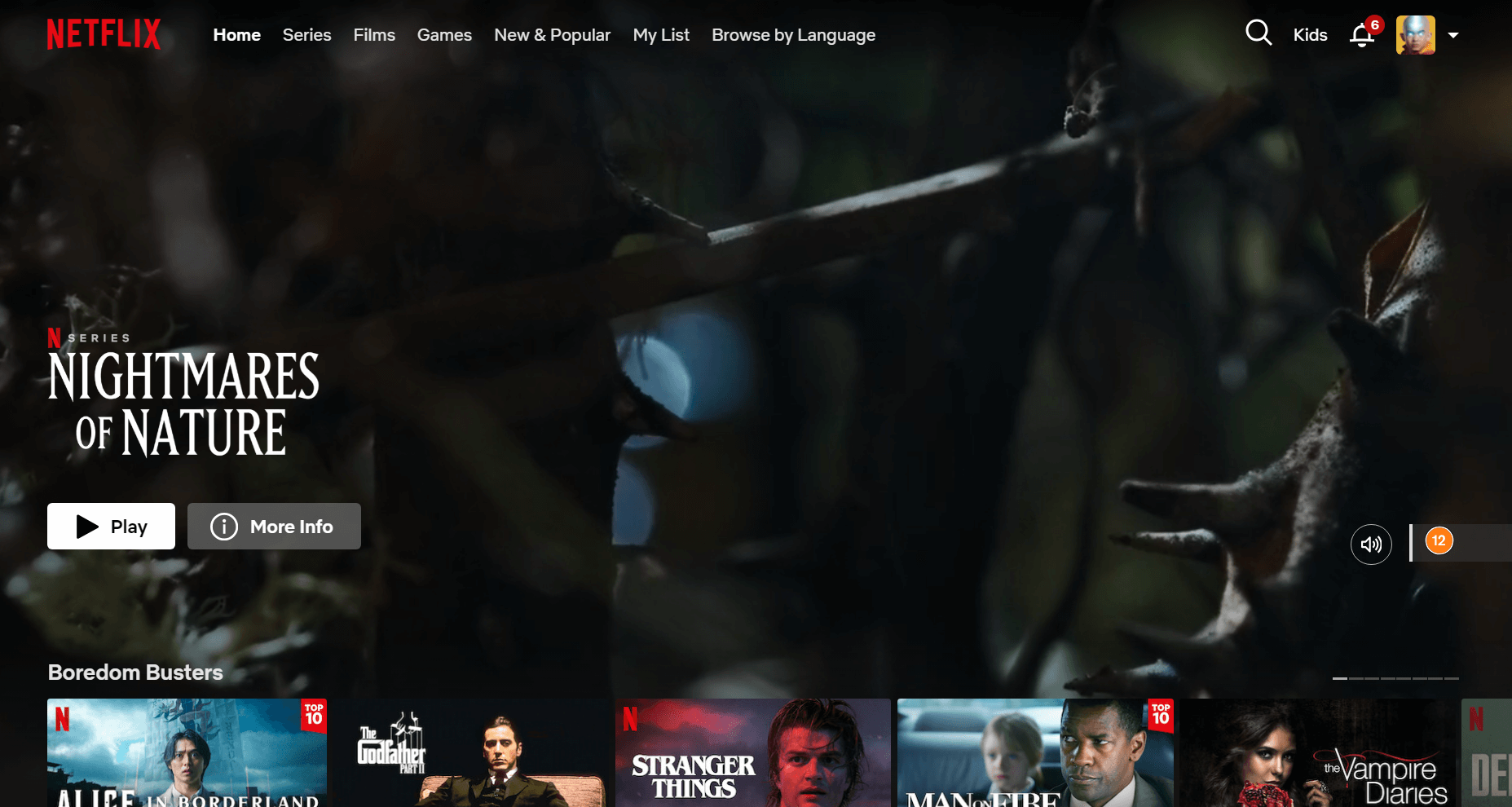
Netflix’s 260 million members generate massive viewing data that feeds recommendation models. The system tracks watch time, completion rates, thumbs up/down ratings, device switching, pause points, and rewind behavior.
Members who watch Korean dramas at midnight get different suggestions than those who watch nature documentaries on Sunday mornings. Homepage rows change based on individual patterns. Someone who binges entire seasons sees “Binge-worthy TV Shows.”
What you can learn from it
Copy Netflix’s thumbnail testing approach. Show different product images to various customer segments based on their purchase history, and then measure which versions generate the most clicks.
9. Spotify – AI-curated playlists and “Spotify Wrapped”
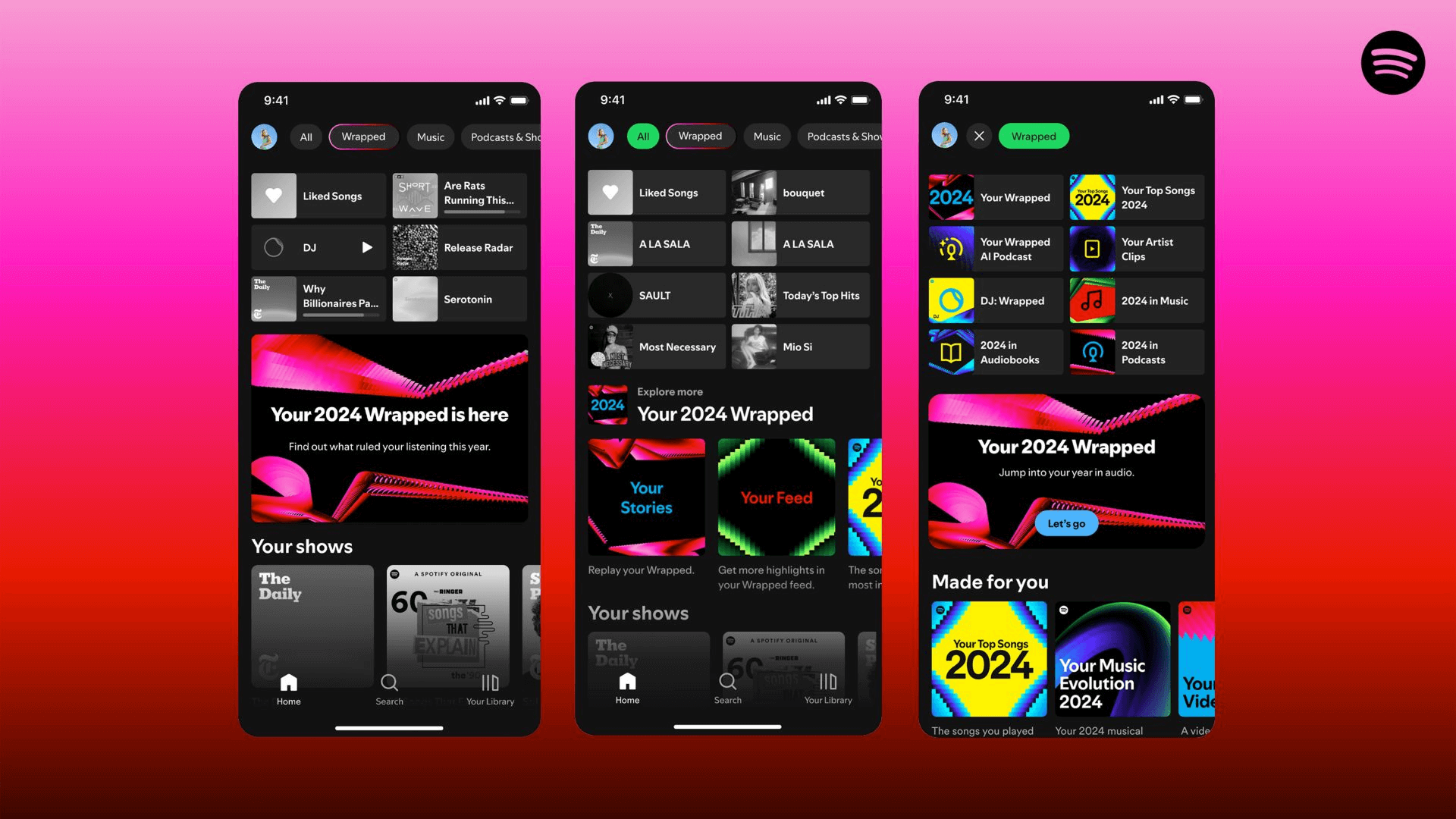
Spotify’s algorithm tracks skip rates, replay counts, and listening times to build taste profiles. Discover Weekly finds 30 new tracks by analyzing songs you save versus skip, matching your taste against similar listeners.
The 2024 Wrapped campaign added AI-generated podcasts where two AI hosts discuss your listening habits, explaining why certain songs dominated your year.
The DJ feature uses generative AI to introduce tracks with context, creating radio-style transitions between songs based on your preferences.
What you can learn from it
Turn customer data into shareable moments. Wrapped works because people want to broadcast their music taste, which also provides Spotify with free marketing via social posts.
10. Google Ads – AI smart bidding automation
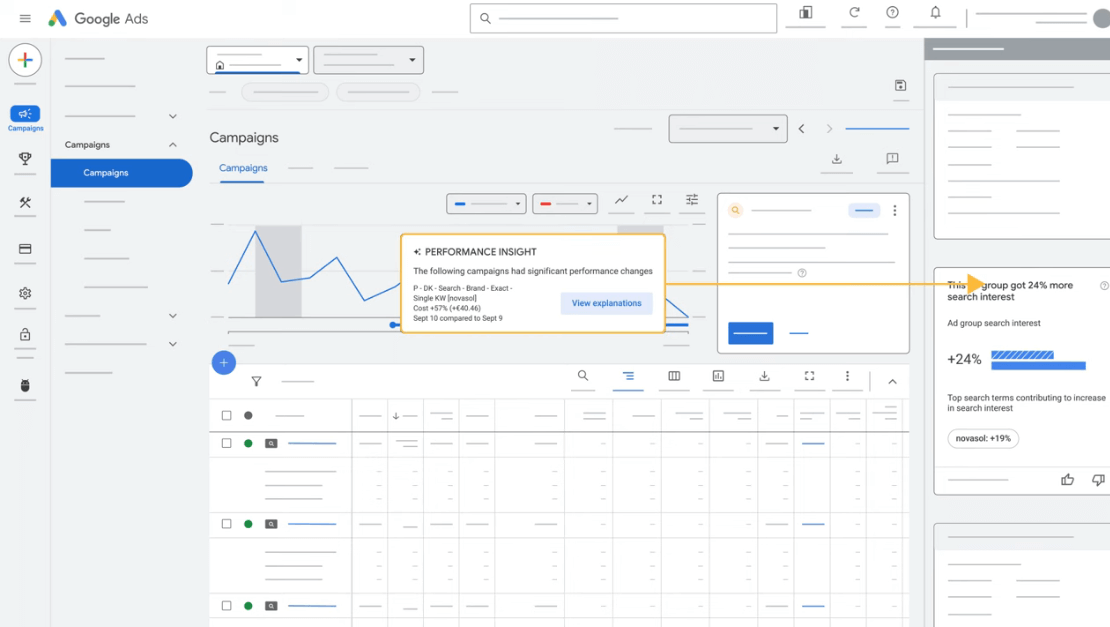
Google’s Smart Bidding adjusts bids for every search in real-time. It analyzes signals like device, location, time, and past conversions to predict who will buy. Set a Target ROAS of 400% and it bids higher on searches likely to hit that goal, lower on ones that won’t.
An outdoor retailer sees bids automatically increase for “waterproof boots” during Seattle rain, while dropping for Phoenix summer searches. You can use a similar context to build the best AI advertising campaigns in your industry.
What you can learn from it
Test Smart Bidding on one campaign first, not your entire account. Google needs conversion data to learn what works, so feed it your highest-traffic campaign and expand from there.
If you enjoyed these artificial intelligence marketing examples, check these out:
20 best email marketing examples in 2025
AI in digital marketing automation
The best artificial intelligence in digital marketing examples aren’t limited to Fortune 500 companies anymore. Marketing automation platforms like Omnisend include AI tools that give your business the same capabilities as the biggest enterprises. Here’s a breakdown:
Advanced audience segmentation
Building segments manually takes hours and misses hidden patterns. Omnisend’s AI segment builder creates audiences from simple prompts, such as “customers likely to buy again this month” or “high spenders who haven’t purchased recently.”
The AI can use purchase history, browsing behavior, and engagement patterns to build segments that convert better than manual lists.
Omnichannel automations
Omnisend’s automations coordinate email, SMS, and push notifications based on customer behavior. Cart abandoned? Email deploys first. No open after 24 hours? SMS follows with a discount code. Still no action? A push notification creates urgency.
It includes 25+ pre-built templates you can customize, or you can build from scratch. Add SMS to any template and layer push notifications onto existing sequences. Each channel respects customer preferences and optimal timing.
Personalized product recommendations
Omnisend’s Product Recommender automatically selects the right products for each customer. It analyzes what customers bought together, individual purchase history, and browsing patterns.
If someone bought running shoes, they’ll see running socks and water bottles — not random bestsellers. These recommendations update hourly and work across emails, popups, and SMS.
Automated subject lines
Give Omnisend’s free AI subject line generator one topic and watch it spin out variations. “Winter sale” becomes “Last chance: winter deals end tonight 🎿” or “Your winter wardrobe awaits” or “Bundle up and save 40%”.
Each version uses different psychological triggers — urgency, personalization, and value. You can then refine and create A/B tests to determine which versions have the highest open rates.
Subject line generation is one of the most effective examples of AI in marketing automation because it directly impacts your email’s ROI.
Dynamic template personalization
Forget creating 50 different emails for 50 customer segments. With Liquid templating, you can drop in [[contact.first_name]] and Sarah sees “Hi Sarah” while Mike sees “Hi Mike.” But that’s just the beginning for personalized emails.
Conditional statements show or hide entire sections. New customers see welcome messages with [% if contact.tags contains ‘first_purchase’ %]. VIP buyers get exclusive offers when their order total exceeds your threshold.
Watch this video for a lighthearted take on Omnisend’s AI tools:
Discover more top ecommerce tools:
30 best ecommerce tools to drive sales in 2025
The future of AI in marketing
The use of AI in marketing is expected to expand monthly. Text tools will write better copy. Image generators will match agency work. Video AI will create TikTok ads, and underneath all that, the tools you use will become more affordable thanks to increasing competition.
Three shifts changing the game:
- Deep personalization: AI customizes prices, products, and messages for your customers
- Conversational AI: Voice and chat handle complex customer issues without scripts or human intervention
- Predictive analytics at scale: It spots trends and customer needs before they become apparent and need action
Challenges that could hold AI back:
- Customer data breaches increase as AI systems interconnect
- AI platforms you become dependent on go down
- Content generation reduces in quality over time due to an increase in low-quality data feeding the machine
AI won’t replace your marketing team — it’ll make them more effective at understanding what customers want and help you build better customer experiences.
Key takeaways: Getting started with AI in marketing
Our in-app, try-on, and generative AI in marketing examples provide blueprints for creating your own unique brand experiences. But before diving in, follow these pointers for success:
- Test AI on your most significant time drain first. If you spend hours writing product descriptions, try AI copywriting. Drowning in customer service emails? Start with a chatbot. Pick the pain point that’s eating most of your day.
- Run AI tools in parallel with current methods for 30 days. Compare conversion rates, time saved, and accuracy to determine the best option. Numbers tell you what works, not vendor promises.
- Connect AI to your existing data sources. Your CRM, inventory system, and past campaigns. Models trained on your customer behavior will outperform generic ones.
- Choose platforms where AI fits your current workflow. Omnisend integrates AI into your existing email marketing. Google Smart Bidding optimizes ads without changing your campaign structure.
Remember that AI isn’t a replacement for your team, even when tools offer agents. Use tools to improve and augment your marketing, not handle it all.
Quick sign up | No credit card required
TABLE OF CONTENTS
TABLE OF CONTENTS


No fluff, no spam, no corporate filler. Just a friendly letter, twice a month.

 OFFER
OFFER







